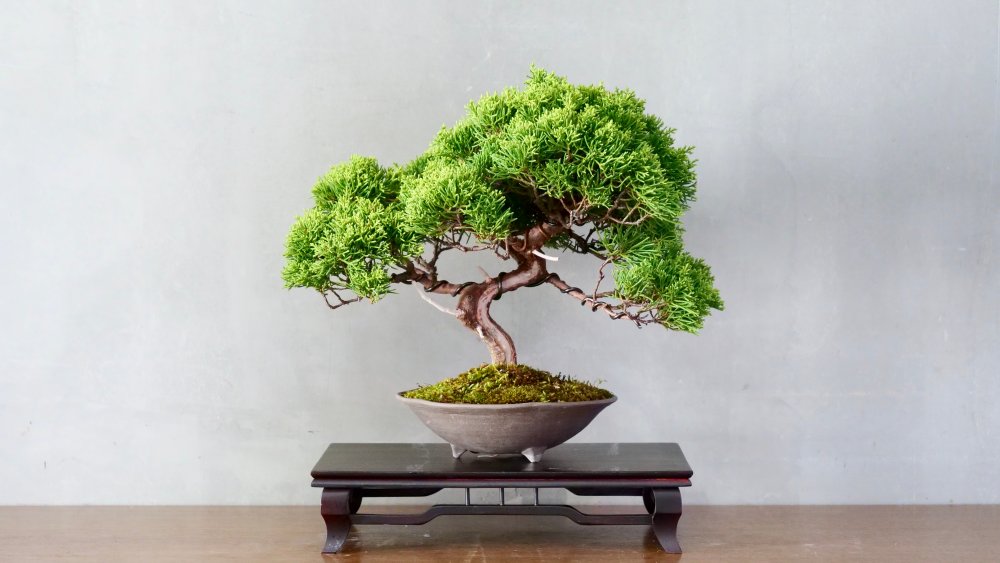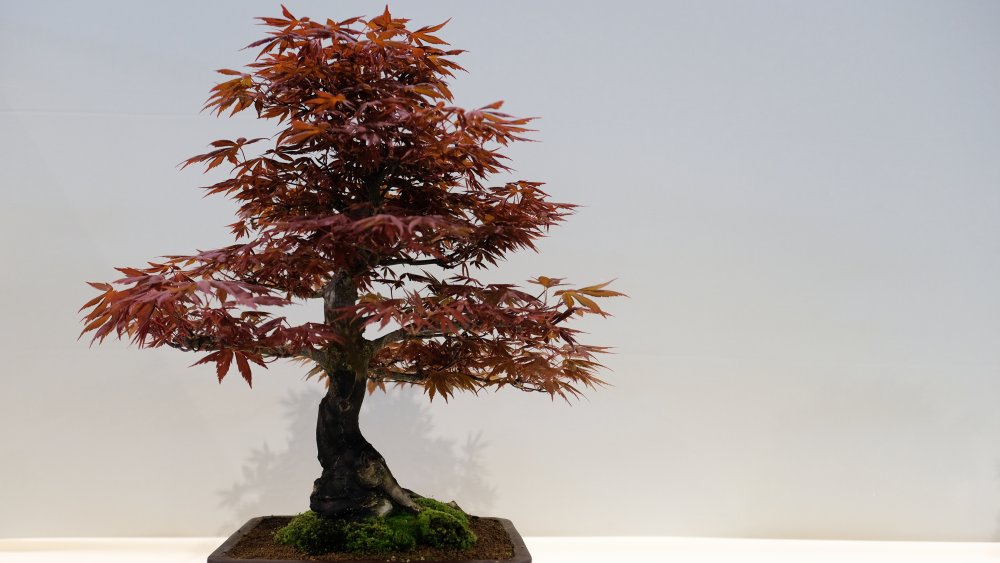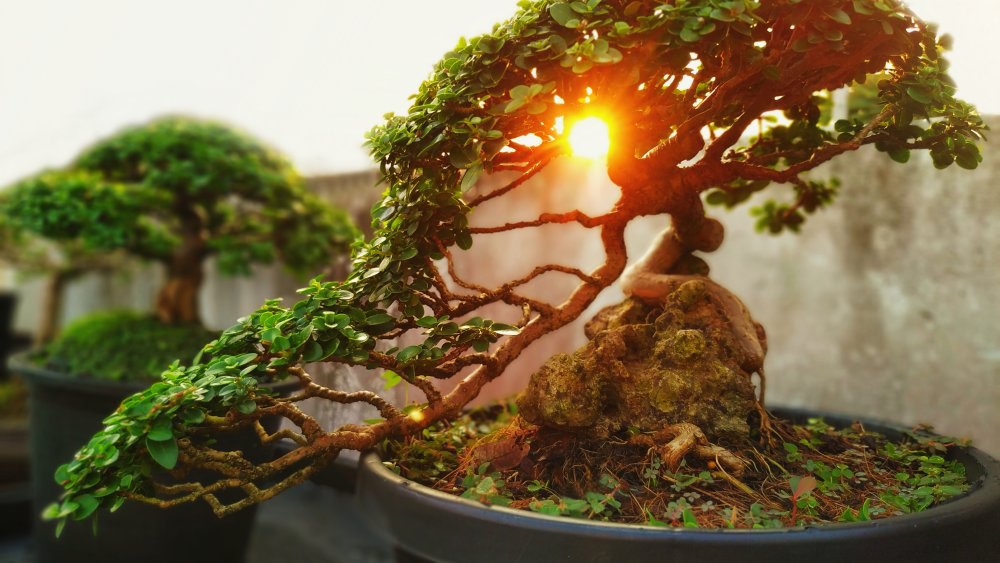This Is The Oldest Bonsai Tree In The World
According to Mythical Bonsai, age is a virtue when it comes to bonsai trees, even if only in appearance. While the 11-tree combination created by legendary bonsai artist John Naka, now housed at the United States National Arboretum in Washington D.C., is considered the world's most famous, it is nowhere near the world's oldest. That itsy-bitsy copse (each miniature juniper represents one of his 11 grandchildren) was only begun in 1948.
The bonsai tree deemed the world's oldest now lives in the Crespi Bonsai Museum in Milan, Italy. Called the Ficus retusa Linn, it is believed to be over 1,000 years old. After more than a millennium of carefully manicured life, it lives under a glass pagoda in the museum with other bonsai trees of various tropical and subtropical species. Measuring in at just over 10 feet tall and over nine feet wide, it is what is called an ògata, or large bonsai. The ancient tree was brought to Italy in 1986 by celebrated bonsai creator and collector Luigi Crespi, after ten years of drinking tea and patient negotiating with its previous owner. Others have attempted to buy the tree from Crespi, but it's now part of his family and won't leave its new (relatively speaking) home any time soon.
A brief history of the art of cultivating bonsai trees
Bonsai does not refer to a specific species of tree, but rather to the art of growing trees in shallow pots and manipulating their limbs into aesthetically pleasing shapes with wires and other tools. It is a Japanese term that translates literally to "tree in a tray," and the art form has long been associated with that country. However, according to Bonsai Boy of New York, experts agree that the art began in China. It was initially practiced by Buddhist monks, and ancient manuscripts and paintings confirm that it dates as far back as 600 AD, but there are many scholars who believe that the roots of the art go back as far as 500 or even 1,000 BC. It later moved east along with Zen Buddhism, and made its first appearance in Japan in the 12th century.
According to Bonsai Outlet, the cradle of bonsai tree cultivation in Japan was in the Kanto region, but a terrible 8.3-magnitude earthquake devastated the region in 1923, and the bonsai business community moved its operations to the Omiya region, just outside of Tokyo. The industry took root here and the art still thrives there to this day. Although, as Bonsai Empire reports, the art has popularized and developed in other countries, like Italy, the Netherlands, and the United States, bonsai is still more closely linked to Japan, and many still consider Japanese bonsais to be of the best quality.
The other oldest bonsai trees in the world
Luigi Crespi's obviously sits at number one on Oldest.org's list of the world's oldest bonsai trees, but just barely. Coming in at number two, also at around 1,000 years old, is a juniper bonsai in Omiya, Japan. It is said to have been harvested from the wild, but has called the Mansei-en bonsai nursery home since its opening in 1925. A pair of 800-year-old bonsai trees in Tokyo's Shunkaen Bonsai Museum come in at number three. The museum is owned and operated by bonsai master Kunio Kobayashi, who has practiced his art for over three decades. He opened the museum in 2002 to spread Japanese culture.
The fourth oldest bonsai tree in the world doesn't fit the commonly held conception of what a bonsai tree is. The red pine bonsai in Atami, Japan, is another ógata-bonsai, towering overhead a whopping 16 feet tall and spreading out over 30 feet wide. Although it's quite a bit bigger than the average bonsai, it still technically qualifies as a bonsai tree, as it is still contained in a tray. It might be the world's biggest bonsai tree, but it's still got a lot of growing to do. It's just a spritely 600 years old. The others on the list are only 500 years old or younger, so we'll get back to you about them in a century or two, when they've got a bit more history hanging from their tiny branches.


